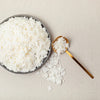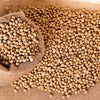Short History of Scented Candles

Scented Candles
The history of scented candles is quite interesting. Originally, people were more focused on lighting up their homes and did not even consider to use candles for another purpose and add fragrance to them to end up wiht scented candles. Over time, with more discoveries, people came up with the idea of scented candles, and now, they're popular all over the world and they can be found in almost every person's home these days. There is no exact date or location for the origin of candle making, but we know that it started about 5000 years ago, at different times of different civilisations
Ancient Egyptians
Around 3,000BC when the ancient Egyptians made candles from a combination of animal fat and reeds. Although the reed wasn't a true wick as we know them today, the concept still worked the same way with the animal fat fueling the flame.
Romans
The Romans made candles around 500BC by dipping rolled papyrus (made from the pith of the papyrus plant) repeatedly into melted tallow or beeswax to form what's generally considered to be the first wick candles.
There's evidence to show that around the world other civilisations were also using wicked candles.The Chinese made wicks from rolled rice paper and their wax from whale fat.
The first scented candles
The Japanese made their candles from wax extracted from tree nuts, and in India, they made theirs from boiling the fruit of the cinnamon tree. These were probably the first candles to give off a pleasant smell when burning as compared to the other widely used methods of making candle wax. Just imagine the difference of a candle what was made out of tallow or whale fat and those were made out of cinnamon. 😊
By the middle ages, with the collapse of the Roman Empire and the resulting lack of olive oil available to fuel oil lamps, the use of candles as a source of light across Europe was commonplace.
Tallow was the standard material used by Europeans to make candles. Because of the very unpleasent smell of burning animal fat, tallow candle manufacturing was banned across many European cities.
After this, beeswax was adopted by Europe as a better alternative as we know a healthy and actually lovely smelling alternative. However, beeswax candles were expensive to produce and as a result were only available to the wealthy, churches and royalty.
Appearance of Scented Candles
Candles remained popular right up until the late 19th century, when the first light bulb was invented and other more modern methods of lighting took precedence. Ever since, candles came to be viewed as a decorative item instead of purely functional. Candles of all different shapes, sizes and colours were suddenly available and the first scented candles were marketed to the public. By the mid 1980's scented candles were firmly established as great mood enhancers, gifts and decorative items.
The popularity of candles throughout the ages and across civilisations has been consistent. The joy of watching a flickering candle burn is synonymous with a sense of comfort and relaxation.
Even though the demand for candles took a dip in the middle, they're back on demand even more than ever.
-
Posted in
A gyertya története, Az illatgyertya története










